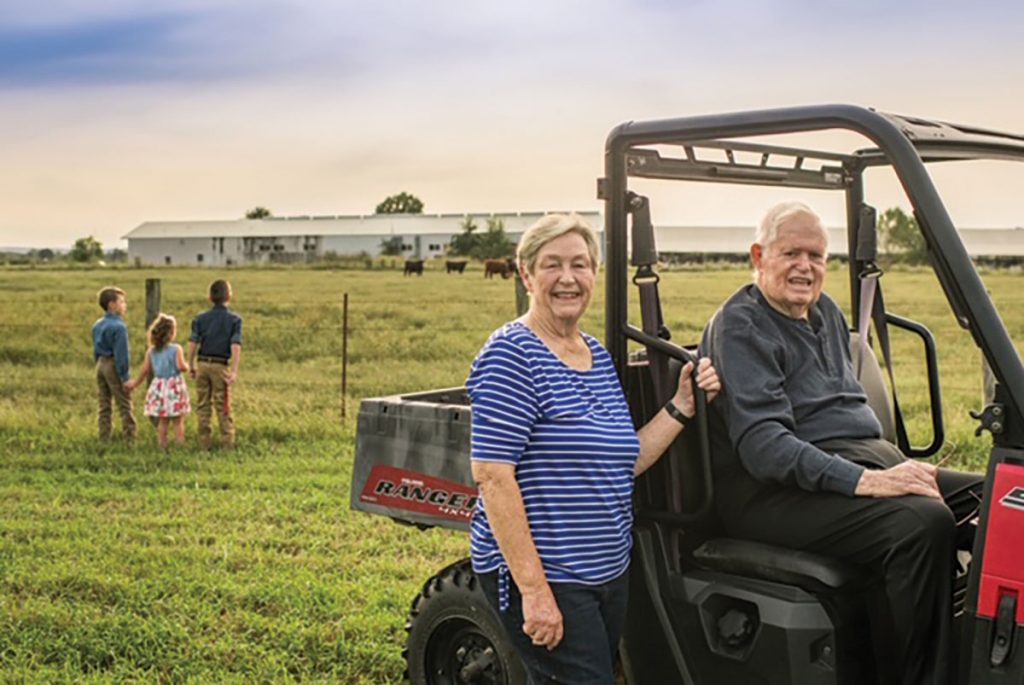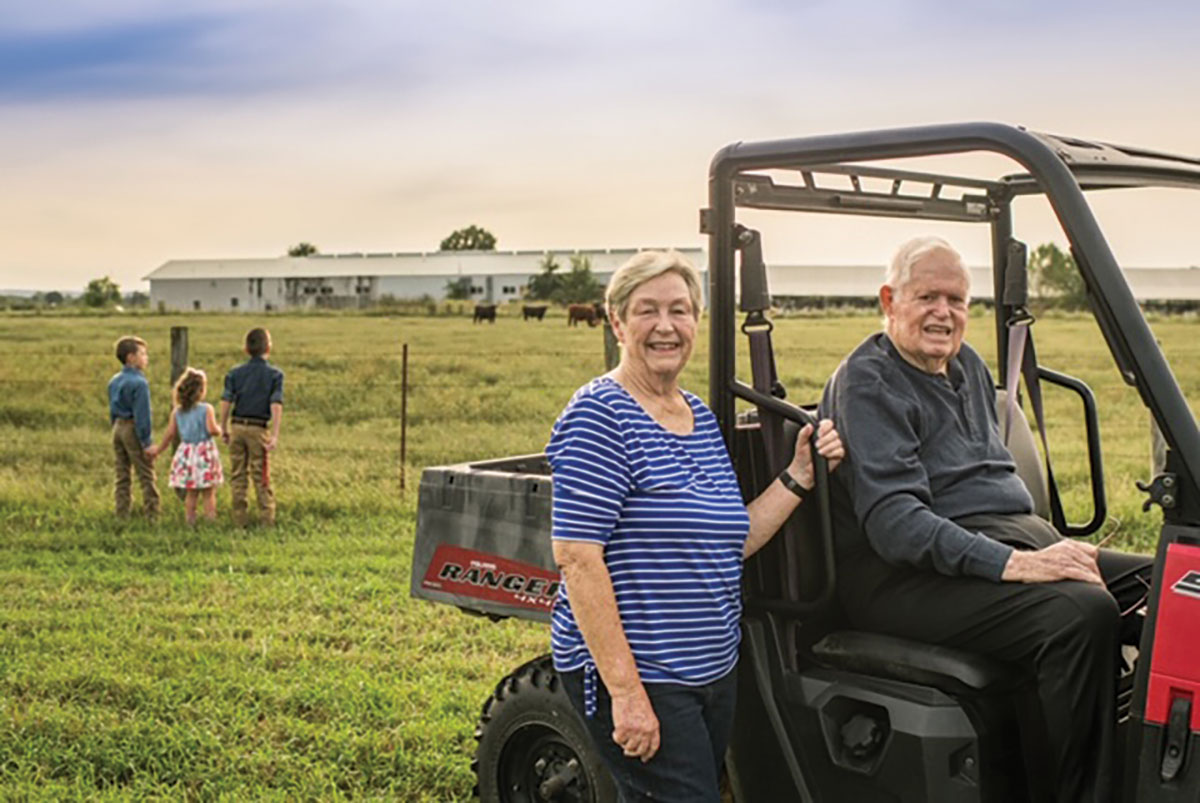
Spears Cattle Company moved from dairy production to feeder cattle and cow/calf pairs
In the 1930s, A.C. and Francis Williams bought 300 acres in Farmington, Ark.
The cattle operation has expanded over the years to 1,000 acres, mostly owned. Spears Cattle Company runs both feeders and a cow/calf operation. The Williams’ daughter Nadine and her husband Bob now run the operation.The family consists of two sons Randy – who manages day-to-day operations on the farm – and Danny, with three grandsons, three granddaughters, four great-grandsons and four great-granddaughters.
Nadine and Bob met while attending the University of Arkansas and recently celebrated their 60th wedding anniversary. After graduating from the U of A in 1962 with a degree in animal science, Bob became a livestock buyer for Swift and Company. They were grooming him for a management position in Chicago when A.C. offered him a job on their dairy.
“I didn’t want to raise our kids in a big city environment,” Bob explained. “I enjoyed my life on the farm and showing cattle for 4-H and FFA and wanted our children to have the same experiences.”
“Everybody in this family has been in the show ring,” Nadine explained. “Every year, Randy goes to Wisconsin to pick out dairy calves for showing because of an arrangement we have with a dairy who uses some of our cows in exchange for giving us calves to show.”
For 33 years Bob happily spent his days milking cows. Nadine fed calves, cleaned the barn and kept the books. They produced milk for the Association of Milk Producers. Bob served on both the local and national boards.
Their dairy was the largest in Arkansas in 2001. At the time, Washington County had 200 dairies and Benton County had 150. Today, Arkansas only has 40 dairy farms. The Spears’ dairy was on the cutting edge of the day’s contemporary technology. All cows wore a transponder that delivered efficiency and health data to a computer system for continual analysis, which was used for decision-making and a forerunner of robotic dairies.
The Spears decided to sell the dairy cattle in 2001 and reinvested in feeder cattle because the dairy business was starving. During the 2012 drought, Bob and Nadine added a cow/calf operation because cattle were cheap and they had the land to pasture those cattle.
Currently, the Spears run 1,600 mostly black feeder cattle and 120 also mostly black commercial females bred by three Angus bulls. They do not use registered bulls since their is a terminal market rather than breeding stock.
Feeder cattle are vaccinated, worked and branded when purchased. Bob attends cattle sales once a month to sell those feeders that reach the target weight of 800 pounds.
“The industry is out of balance with packers making too much money while farmers struggle for profits,” Bob said. “The challenge today is to try to figure out a way to balance different parts of the industry so you can make money.”
While most nutrition for all cattle comes from grazing, the cattle also receive a total ration mix, which is constantly analyzed to maintain 14 percent protein and 2 percent fat. Cattle also receive farm-produced hay and silage.
For the Spears, running their bulls with the commercial cows year-round works best. Cows are culled by age or for skipping a breeding cycle. They are worked in the fall when heifers are sold and the bull calves are castrated and added to the feeder herd. Parasites and flies are handled by an injectable with fly tags for additional fly control support.
Producing hay and silage is an important part of the Spears’ financial strategy. Four hundred acres are set aside for double cropping. This year, drilled soybeans and forage winter wheat are planned using the same process they used with the dairy farm. Strategies and usage of land for hay and silage is determined and altered according to weather conditions. Regardless, all land is fertilized with commercial fertilizer every spring and sprayed for weeds when planting. Spot spraying is used for thistles, an activity that keeps one grandson very busy.
Water sources are varied. Part comes from an artesian spring, which supplies water to one area and three houses. Other sources include fresh creeks, ponds and water tanks. This variety of water sources helps during unfavorable weather conditions.
Bob was inducted into the Arkansas Agricultural Hall of Fame in 2009. Many of Bob’s activities contributed to his induction. These include 2008 Graduate of Distinction from the Department of Animal Science from the University of Arkansas and multiple trips with Partners of the Americas to Bolivia to assist in agricultural development and advancement among farmers.
A love of livestock and land runs deeply. Bob and Nadine understand the ups and downs of the cattle industry and are happy to be part of it. As they get older they say they are blessed to have a son to continue the farm.
“I cried when Bob took me off the farm to work for Swift,” Nadine confessed. “I cried for joy when he brought me back because this is where we and our family belong.”







